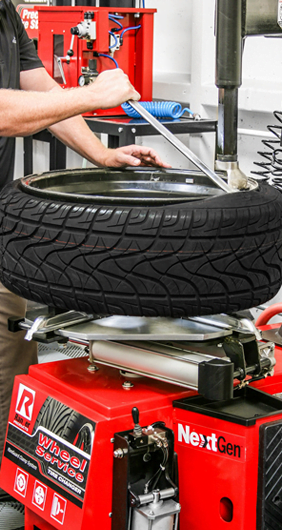Car tires need a certain thickness to maintain their tread. So how think is a car tire, and when should you be concerned about replacing a tire?
Tires are precision equipment and have specific tolerances. They are made of rubber compounds that need at least a certain thickness to do their job safely.
A car tire usually starts at around 8 to 9 millimeters – or up to 11/32 of an inch. The tread will wear down with use, and need changing before they get to 2/32. A tire tread can readily be measured with a tire tread depth gauge or a penny.
Thickness does depend on a couple of factors, including the type of car tire. We'll discuss what to look for in tread depth as well as other measurements for tires, in addition to why it is important to know the thickness of your tires.
We've done plenty of research in regards to tires and their thickness needs. We've also replaced quite a few tires and understand the worry some drivers have when it comes to tire safety.
Most standard all-season tires start with up to 11/32 of an inch thickness. With additional weight on them and the need for more torque, some truck tires can start with more tread thickness and a more aggressive tread. These include snow tires, especially, which are commonly driven in extreme conditions.
If you wanted to know, the sidewall also has a specific thickness, though it does vary greatly based on the model of tire. You can anywhere from ¼ of an inch of rubber on the outside all the way up to just over a half inch. Speaking in fractions, that's a big difference and often there to support a larger vehicle like a truck.
How do I test my tire tread depth?There are many ways to test tire tread depth. We'll go over a few of the more accurate efforts.
Tread depth gaugeTread depth gauges are the most accurate way to measure a tire without going to an auto shop. Tread depth gauges are very simple devices, often with a white stick that acts as a small ruler. These are also often attached to a tire pressure gauge so you can measure your tire's PSI while you measure depth.
These are also often attached to a tire pressure gauge so you can measure your tire's PSI while you measure depth.
Put the gauge into the tread and see how deep it goes. The ruler printed on the side will give you a great indicator of how many millimeters or tens of an inch you have left. You would also be wise to measure tread depth in more than one area, especially if your vehicle's tire looks like it has cupping, uneven wear, or is driving out of alignment.
PenniesWhile tread depth gauges aren't exactly expensive, pennies are just one cent. This method isn't as accurate because it can't produce an actual number for tread depth, but it does effectively tell you if you have a problem. Here is the not-so-secret: take a penny and hold it upside down in the tread so that Lincoln's head is pointing down. If you can't see the top of Lincoln's hair, it's a good sign that you have sufficient tread depth. While this method can be used in a pinch, we still recommend a tread depth gauge to know how much tread you really have.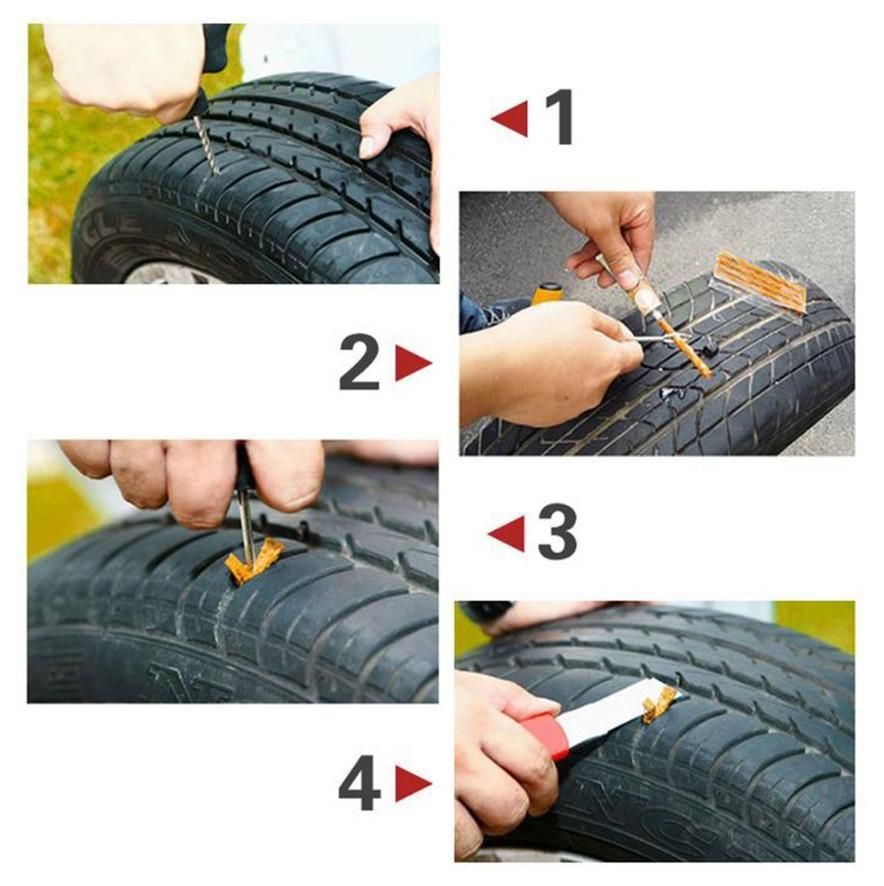 Lincoln was said to be honest, but unfortunately, his copper image can't tell a real number.
Lincoln was said to be honest, but unfortunately, his copper image can't tell a real number.
While you are in the shop getting an oil change, many auto shops will check your tread depth and PSI ratings for your tires anyway. We'll admit that their motivation is definitely to sell you a new tire, but if you need it and their measurements are accurate, they aren't wrong!
How thick do my tire treads need to be?To drive well in not perfect conditions like rain or snow, you'll want at least 4/32”. This doesn't sound like much, and honestly, it's not. At this depth, you have probably worn your tires down significantly and also risk having them erupt – or worse yet, lose their ability to accelerate or stop quickly.
In some states, you aren't legally allowed to drive on tires with less than 2/32 of an inch because you represent a danger to other drivers or yourself.
If you are an aware driver, you will probably notice issues related to having too little tread depth left. Or at least we hope you do!
Or at least we hope you do!
Some drivers think their tires wear out faster than normal. In reality, tires tend to have a warranty for their number of miles or years and any defects are covered. With that said, you might drive a bit more aggressively than the tires are designed for.
There are a couple of things you can do to ensure your tires last a while:
Slow downTires are worn out at high speed and during braking, as they rub the pavement hard and create heat. If you find yourself taking off hard like a jackrabbit start or stop hard at stoplights or stop signs. The answer here is simple: Accelerate and brake with less force. Sometimes you just can't, and we understand that, but in the situations you can control, be a bit tamer.
And don't do burnouts. Burnouts are terrible for treadwear and will disintegrate your tires.
Check your alignmentA poor alignment or tires that haven't been rotated in a while can also cause problems. A vehicle that is out of alignment will result in uneven wear that makes one or two tires wear down faster than others, which also gives you an odd ride. While you will have to replace the tires eventually, problems like this can extend to your suspension and leak all the way down to having an unsafe ride. In other words, check your alignment regularly. If your vehicle feels like it pulls in one direction or the steering wheel doesn't stay straight without some force at low or high speeds, you might need some alignment help.
A vehicle that is out of alignment will result in uneven wear that makes one or two tires wear down faster than others, which also gives you an odd ride. While you will have to replace the tires eventually, problems like this can extend to your suspension and leak all the way down to having an unsafe ride. In other words, check your alignment regularly. If your vehicle feels like it pulls in one direction or the steering wheel doesn't stay straight without some force at low or high speeds, you might need some alignment help.
Rotating your tires doesn't mean moving them in place. Instead, especially as it applies to two-wheel drive vehicles, it means swapping tires and having them in the drive wheel place for a while. On a two-wheel drive sedan, only two of the wheels receive the power needed to move the vehicle forward or back. This means that those tires will have additional strain while others are rolling along with the vehicle. Switching them means that the wear is overall more even.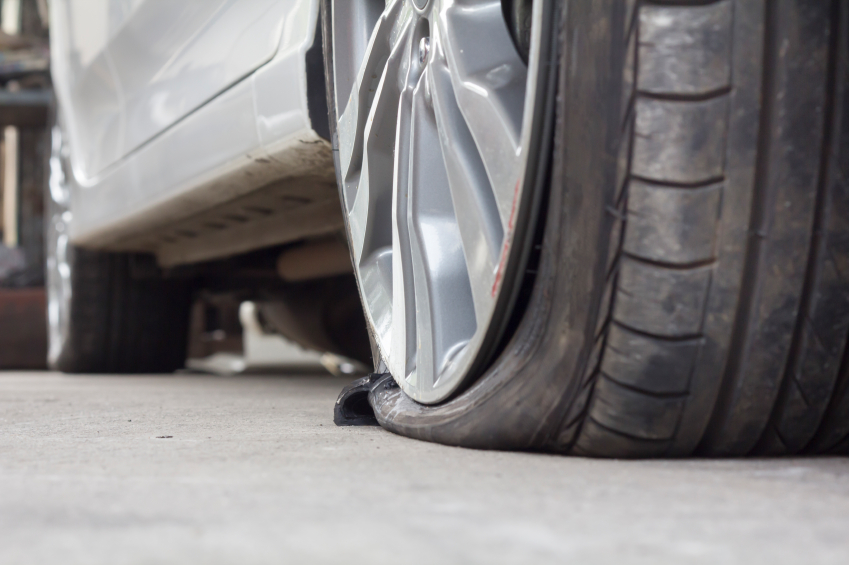
Kind of a weird question, but I'm doing an art project and I'm thinking about using old car tires. How thick are they, specifically the treads? I want to make sure they'll work before I haul them all the way to my house.
Liz Jenson · Answered on Oct 27, 2021
Reviewed by Shannon Martin, Licensed Insurance Agent.
What a cool way to recycle tires! Tire thickness will depend on how old the tires are and the brand you get.
Generally, new car tires will have a 10/32-inch or 11/32-inch tread depth. Some trucks and SUVs may have deeper treads, and winter tires are typically thicker than average, too.
However, the U.S. Department of Transportation recommends that people replace their tires when the treads reach 2/32 inch, so any used tires you find will likely be thinner.
Car tires thin out over time, but your car insurance coverage shouldn’t. The Jerry app can help you to compare prices and coverages from different insurance companies to make sure that you’re still paying what you should for your car insurance.
The Jerry app can help you to compare prices and coverages from different insurance companies to make sure that you’re still paying what you should for your car insurance.
MORE: How to put snow chains on tires
Car MaintenanceCar Tires
WHY YOU CAN TRUST JERRY
Jerry partners with more than 50 insurance companies, but our content is independently researched, written, and fact-checked by our team of editors and agents. We aren’t paid for reviews or other content.
Browse More Content
What To Do If Your Parking Brake Won’t Engage
What To Do If Your Parking Brake Won’t Hold
What To Do If Your Electrical Components Are Not Working
Vent Oil Separator: Replacement Cost
Center Support Bearing Replacement
Dodge Nitro R/T Insurance Cost
Hyundai Tucson Sel Convenience Insurance Cost
Kia Niro Fe Insurance Cost
Subaru Forester 2. 5I Touring Insurance Cost
5I Touring Insurance Cost
Bmw M440Xi Insurance Cost
Cheap Car Insurance in Maine
Cheap Car Insurance in Hawaii
Cheap Car Insurance in Illinois
Cheap Car Insurance in Nebraska
Cheap Car Insurance in Washington
Howe Car Insurance
East Troy Car Insurance
Leawood Car Insurance
West Babylon Car Insurance
Chittenango Car Insurance
What’s the best way to take a car wrap off? It’s looking kind of faded, and I’m ready to get rid of it. I’d rather not spend the money for someone else to take it off.
Liz Jenson
Oct 27, 2021
I'm fixing up an old car and getting a secondhand stereo. How many watts is good for a sound system?
Liz Jenson
Oct 27, 2021
I get a ton of road noise in my car. Can car doors be soundproofed?
Can car doors be soundproofed?
Liz Jenson
Oct 28, 2021
Browse All Questions
Your Ford F-250 will have a wheelbase of 142 to 176 inches, depending on your cab and bed configuration. Read more here!
Drew Waterstreet
Jun 15, 2022
Keep gasoline in a gas can away from heat and potential sparks when transporting it in a vehicle. Learn more about gas can safety with this guide.
Drew Waterstreet
Oct 12, 2021
Here are just three of the most memorable 50s Fords that are considered classics today. This time period was an interesting one for Ford.
Drew Waterstreet
Oct 10, 2021
Texting and Driving
Uninsured Motorist Protection
Car Repairs
Parking
Valuable Articles Insurance
Company Cars
Europe
MetLife
insurance agents and brokers
Crash Test Ratings
Stolen Cars
Virginia
Kemper Preferred
Scooters
Natural Disasters
Subrugation
Online Insurance Shopping
buying
Equipment Breakdown Insurance
Natural Disaster
Bodily Injury
Cancellation Policy
Toyota Prius
Liberty Mutual
Empower Insurance
Insurance Agents
Car Loan
No long forms
No spam or unwanted phone calls
Quotes from top insurance companies
Find insurance savings — it's 100% free
Car Insurance
Cheap Car Insurance
Car Insurance Quotes Online
Types of Insurance
Toyota
Hyundai
Mercedes-Benz
Subaru
Chevrolet
Mitsubishi
ALAKAZARCACOCTDEFLGAHIIDILINIAKSKYLAMEMDMAMIMNMSMOMTNENVNHNJNMNYNCNDOHOKORPARISCSDTNTXUTVTVAWAWVWIWY
Please enable JavaScript in your browser to display pages properly.
8 (800) 707-65-40
Request a call
Remind password
Personal account
New customer
5 + 1 =I hereby confirm that I have read and agree to the terms of the privacy policy and consent to the processing of my personal data. Learn more
Request a call
Leave your phone number and a convenient time to call, and we will call you back
Shopul. Komsomolskoye highway, 3b st. Business, 7st. Vaneeva, 209Aul. Golubeva, 7 st. Karl Marx, 60 vul. Comintern, 39, room 1st. Generala Ivlieva, house 24Aul. Fuchik, 36, Perekhodnikova st., 28/1 st. Dyakonova, 2 r. Gaugelya 2A/2pr. Gagarina, 37b 7+2= I hereby confirm that I have read and agree to the terms of the privacy policy and consent to the processing of my personal data. Learn more
Learn more
Many characteristics depend on the tread depth of tires: grip with the roadway, reducing the possibility of aquaplaning. The pattern of car tires differs depending on the model of the car and its operating conditions. The tread depth of off-road vehicles can reach 17mm, while for sports cars this figure can be 5mm. The tread height of a summer wheel depends on the brand of the car and its manufacturer.
In summer conditions, car tires must achieve the following main objectives:

The average height of a car tire pattern varies from 6 mm to 8 mm. The minimum tread depth for vehicles of categories M1 and N1 (private cars and vans) is 1.6 mm. A tire worn to a smaller pattern is prohibited from use due to the risk of an accident.
The main differences are the density of rubber, namely its chemical composition, the type of tire tread and the presence of studs. Metal inserts, of course, may be missing on a winter tire. Summer tires are more rigid, because. should have a higher degree of wear resistance. This is due to the car driving in the summer on asphalt or other types of aggressive road surfaces that are not favorable for soft rubber.

Complain
Thank you
Online shop KOLOBOX
Which tires to buy? Should I change tire size? At the beginning of the next season of “re-shoeing”, these and other issues related to the choice of tires are still of interest to thousands of car owners. Portal "AutoVzglyad" will give some tips that will surely help understanding the general dependencies in this matter.
Sergey Sokolov
In the context of a myriad of product options, no one can ever be sure of the unequivocal correctness of the choice. When recommending something to you, 95% of “advisers” pursue one goal - to convince themselves of the correctness of their own decision.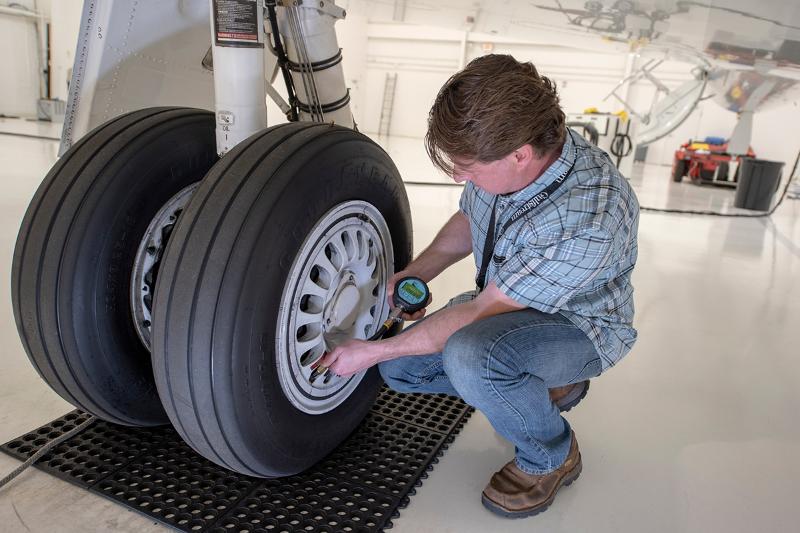 Aggressive imposition is typical for people who are insecure, doubting their choice. On the contrary, listen to a person who criticizes his own things: most likely he is telling the truth.
Aggressive imposition is typical for people who are insecure, doubting their choice. On the contrary, listen to a person who criticizes his own things: most likely he is telling the truth.
The size recommended by the manufacturer is a good universal choice, but merciless tuning cannot be stopped, many people really want wide tires. At the very least, you should not go much beyond the recommended width. It is not necessary to put tires wider than the rear tires - handling will suffer critically. You can’t put different tires on an all-wheel drive car, but if you really want to, use a tire calculator to ensure that the rolling radii of the front and rear wheels are equal. The installation of low profile tires will lead to an increase in the speedometer readings and an improvement in dynamics, and vice versa - when driving on a high profile, there will be an impression of some loss of power. There are a number of other nuances.
Photo by clickmountairy. com
com
The wider the tire and the lower the profile, the less the tire is prone to lateral deformation, the less its “steer”, which means that such a tire keeps a straight line more stable, but the steering wheel will become more “sharp”, some of these are tires. In a sharp turn, wide tires cling to the road for longer, but unlike the “normal” one, they break into a skid sharply, jerkily.
Wide tires are more "nervous" in asphalt ruts, and this is explained by the balance of forces. On an inclined part of the track, different sides of the tire have different rolling resistance due to different loads. The total resulting force tries to turn the wheel, and the wider the tire, the greater the "shoulder of force" and, accordingly, the stronger the impact.
The well-known feature of wide tires is that they "eat" the edges - a consequence of the laws of geometry. The outer and inner beads of the tire travel different paths in the turn due to different distances from the center of the turn.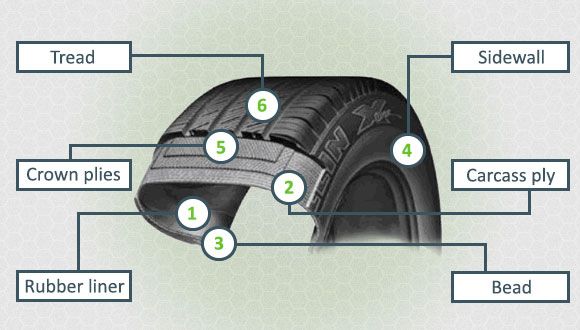 The wider the tire, the greater the difference in paths, and the greater the deformation and microslip of the tread along the edges of the contact patch, the wear in these areas increases. Tread slip cannot be seen, but can be heard in winter when driving on packed snow. Even with very slow, so to speak, creeping movement, the creak of snow in a turn will be much stronger than when moving in a straight line.
The wider the tire, the greater the difference in paths, and the greater the deformation and microslip of the tread along the edges of the contact patch, the wear in these areas increases. Tread slip cannot be seen, but can be heard in winter when driving on packed snow. Even with very slow, so to speak, creeping movement, the creak of snow in a turn will be much stronger than when moving in a straight line.
Photo canadiantire.ca
761757
Practically derived law confirms the laws of physics and narrow-minded instinct: tires with thin beads help save fuel, but are always less resistant to sidewall breakdown. Manufacturers' assurances about the "supernanomaterial" of the cord - we skip. Bottom line - tires with a thin sidewall can only be recommended for driving on good roads.
Contrary to manufacturer claims, directional tires provide a very slight increase in hydroplaning onset. It is logical that tires with a rough pattern and wide grooves “float” less.
Tire noise is difficult to predict from the tread pattern. Sometimes a developed tread suddenly turns out to be very quiet, and a relatively smooth, road tread makes disgusting howls.
Photo wheelworks.net
When choosing a tire, it is important to pay attention to the quality of rubber. The entire surface of a good tire should be noble-shiny, free of air bubbles, with clear inscriptions. Tire balancing "to zero" should be achieved with a small number of weights. Sometimes, after changing tires, the car pulls to the side, or the zero position of the steering wheel shifts. If the pressure is normal, then the reason is the so-called power heterogeneity of the tires: one of the front tires is stiffer than the other, and rolls harder. In this case, try swapping the front and rear wheels. Should help.
398817
HISHISHIKS WELD READY AND PPPs, and drivers - new problems
425174
GAISHNIVES WAITS Reduced and Translations, APS, AT DIARS, AT DIARS.